Introduction
Launched at Photokina in 2012, the Leica S is a revised version of the original Leica S2, the firm’s professional medium format camera intended for both field use and studio photography. Like the original, it adopts a custom made Truesense Imaging 45 x 30 mm (3:2 aspect ratio) 37.5-Mpix CCD but features improved image processing with increased sensitivity from ISO100-1600 including an auto ISO selection option. Other upgrades include a larger buffer (now 2GB) and faster transfer rates, allowing consecutive capture of up to 32 lossely compressed DNG files.
Although the environmentally sealed magnesium alloy shell remains virtually unaltered, the Leica S features built-in GPS. In fact, the inclusion of the GPS antennae on the top plate can be used to identify the new model, while to the rear, a new rocker switch for improved menu navigation, replaces a push-button on the previous iteration. As a system intended for professional use the Leica S has both a focal plane shutter with a flash sync up to 1/125th second the option to use the firm’s CS (central shutter) lenses with flash syncing up to 1/1000th second. Leica delayed the launch of the CS lenses till they were certain the internal shutter mechanisms were durable enough for professional use – they’re guaranteed for a minimum 100K actuations. Measuring 6.3 x 3.1 x 4.7″ (160 x 80 x 120mm) and weighing 2.78 lbs. (1260g) the Leica S is available now at $21,950.
Key specifications:
- 37.5-Mpix 30 x 45mm CCD sensor
- ISO100-1600, plus Auto
- Single cross-point array PD-AF system
- Focal plane shutter 1/4000-32 secs. Flash sync at 1/125th sec
- Optional central shutter (CS) lenses with flash sync to 1/1000th sec
- 3.0″ 920 K-dot tilt LCD (covering sRGB color space)
- Continuous shooting at up to 1.5 fps
- Environmental sealing
- Dual CF and SD card slots
- Built-in GPS
The Leica S achieves a DxOMark sensor rating of 76, a lower than expected score for a large high-quality sensor like this. It’s ranked in 57th place overall, and comes 7th of the ten medium format cameras in our database, on a par with the older Phase One P45 Plus and Leaf Aptus 75S.
Although color sensitivity is relatively high at 23.9 bits, it is in fact marginally lower than the previously mentioned Phase One and Leaf models.
Dynamic range is also slightly narrower at 12.2 Evs.
The low-light score looks on the low side as well, but it is worth noting that 824 ISO is actually a good score for a medium format CCD sensor…
Compared to two more recent medium format models that we’ve had the opportunity to analyze, the Leica S sensor is quite someway behind the Phase One IQ180. Besides being a cool $42,500, it must be noted that that previous flagship model adopts a larger ‘full-frame 645’ (40.4 x 53.7 mm) sensor, albeit with 80-Mpix resolution and a smaller pixel pitch than the Leica’s. Nevertheless, it has higher color sensitivity (as currently the best performing sensor in that category) and a wider dynamic range of close to 1.5 Ev at base ISO. Low-light ISO performance between the two is similar when taking the IQ180’s Sensor+ oversampling into account.
Compared with the more accessible priced $9,400 Pentax 645D, the Leica performs similarly though the Pentax has the slight edge in each of the three ‘use case’ scores. It has virtually indistinguishable color sensitivity, and similar (less than +0.5 Ev) maximum dynamic range but the Pentax has very impressive low light capabilities with a +2/3rds stop improvement in sensitivity.
Given the Leica’s slight advantage in pixel pitch, the 41-Mpix ‘cropped 645’ (33 x 43mm) size CCD in the Pentax performs very well indeed.
Compared with the best-in-class models with 35mm full-frame CMOS sensors, the Leica CCD sensor looks a little beleaguered, and it’s all due to their exceptional low-light sensitivity and wider dynamic range. Both the Sony A7R and Nikon D800E have only marginally better color sensitivity at base ISO but the two models (with their Sony sourced 36-Mpix CMOS) have around a maximum +2 Ev wider dynamic range at base ISO and just over +1 2/3rds stop advantage in low–light sensitivity.
In the rarified atmosphere of professional medium format cameras, the Leica S performs very well indeed. It has both very good color and dynamic range and, surprisingly perhaps, it has excellent low noise characteristics. While it’s clear smaller 35mm full-frame CMOS sensors have better dynamic range and lower noise at ultra-high ISOs, the Leica S is delivers on its promise as being just as adept in the field as it is in the studio.


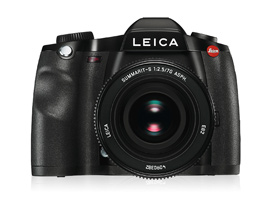



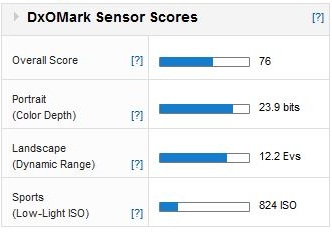
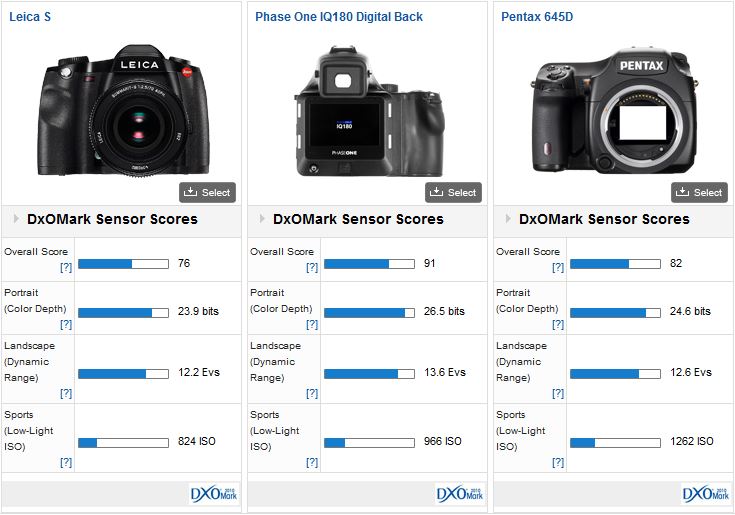
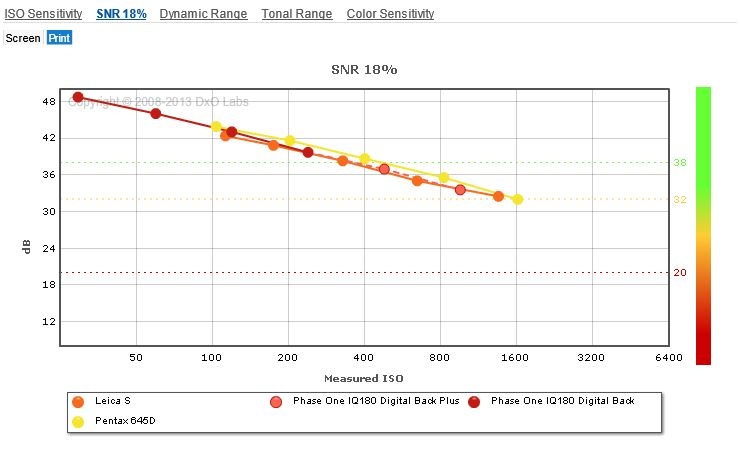
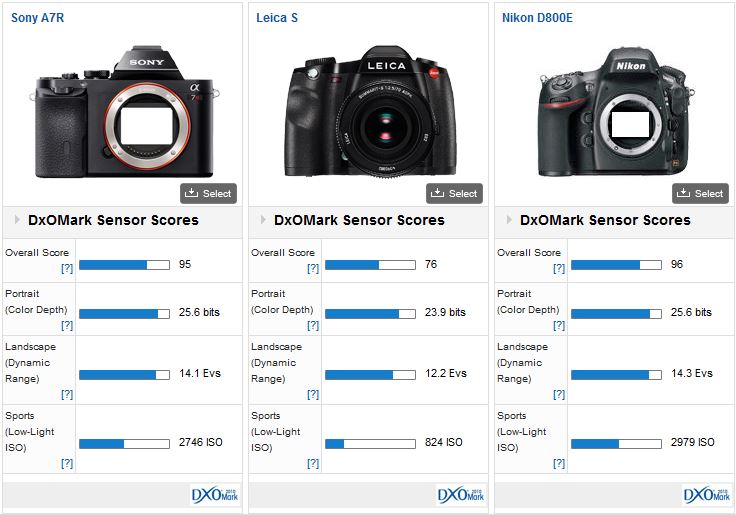
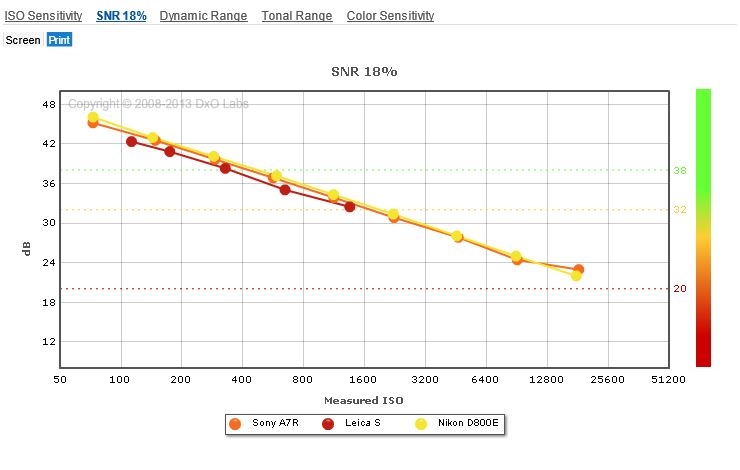
DXOMARK encourages its readers to share comments on the articles. To read or post comments, Disqus cookies are required. Change your Cookies Preferences and read more about our Comment Policy.